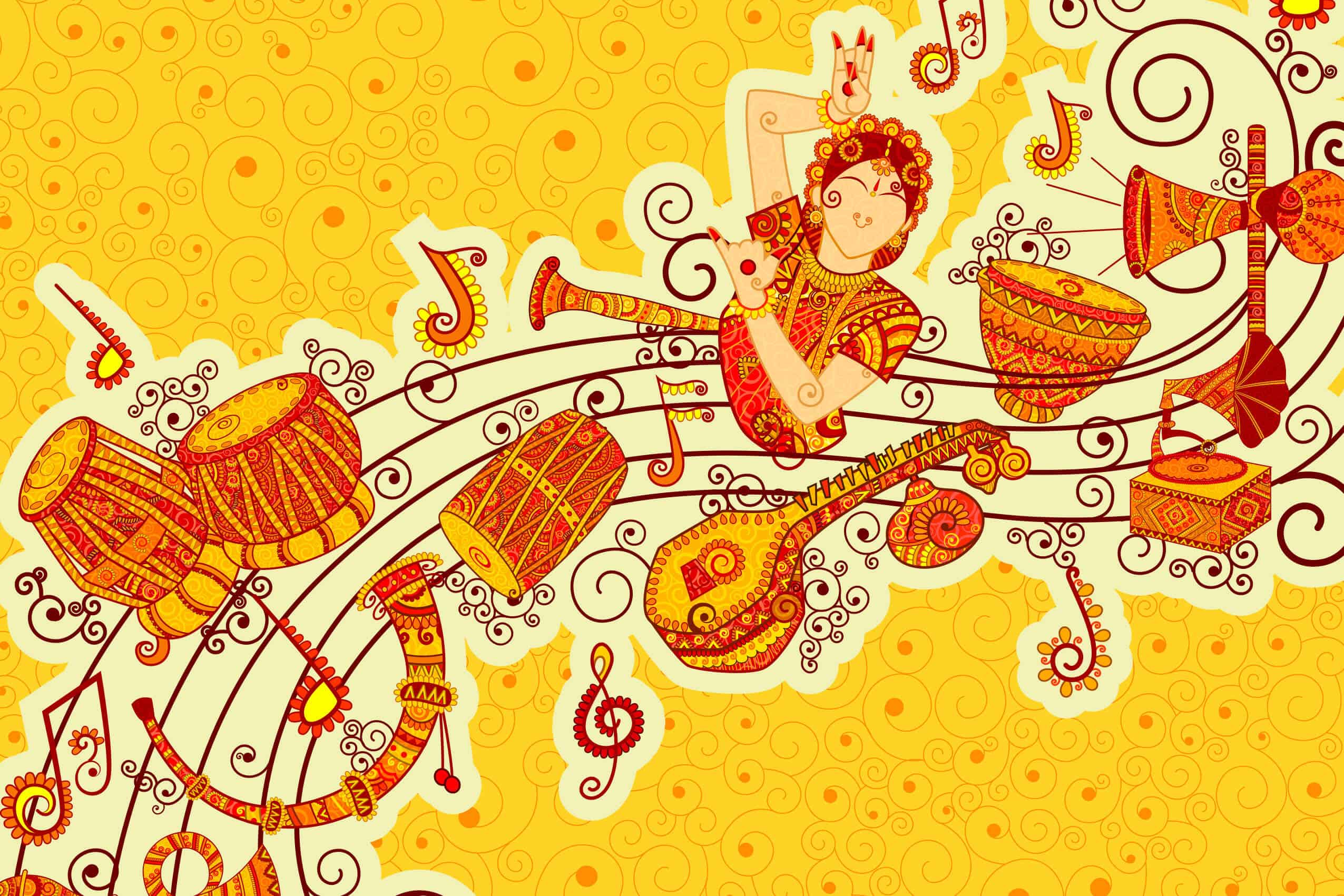It is our duty to become globally aware. Not only in the land of politics and social issues, but through the world of music! Music has the power to bring people together in ways no one has ever imagined. These efforts are built through the eyes of Aruna Sairam and Carnatic Music.
Meet Aruna Sairam
Who is Aruna Sairam? Music brings people together from different parts of the world! It has the power to entice various backgrounds of individuals and create bonds that can’t be broken. Frankly, music is an intimate being.
When listeners connect to a body of music their spirits become weak as they fall into a trance of beauty through memories and peace. Exploring music can be viewed as a healthy drug – an addiction that needs to be fulfilled but is a perfect way of learning about different cultures.
There is a lot of music that lives on the global street, but why is it that we don’t open ourselves up to different kinds of music? Is our music ignorance and genre intelligence holding us back from venturing into new music realms?
This question puzzles me as world music has become less intriguing over the past couple of years to listeners. With a world filled with techno, and other pop implications, it’s hard to bring a strong foundation of traditional music to the forefront. Maybe there is hesitation from artists, who maybe feel that their music is just a “historical sub-genre”.
Maybe various types of music don’t resonate in certain areas. But should that stop artists from taking the leap and venturing outside their music comfort zone?
South Asian music has birthed many of the world’s most intricate bodies of music in the entire time of life. With the evolutionary pull of Indian traditional music, Hindustani and Carnatic music create a solid foundation for all things intricate and intelligent music.
Aruna Sairam fuels the traditional historical fire of Carnatic Music on the global stage.
More Vocal Training
Sangeetha Kalanithi Aruna Sairam is known for her impeccable career as an Indian classical vocalist. Born in Mumbai, Aruna was immersed into a highly musical family.
Receiving vocal training from her mother Rajalakshmi Seetharaman, who studied under the Alathur Brothers, 20th-century polarizing Carnatic vocalists along with Thanjavoor Sankara Iyer.
Shri Seetharaman was a music enthusiast and homed various dance musicians and artists. In her childhood, Aruna showed a glimpse of musical powers, winning a Mumbai vocalist competition at age 8.
At 14 years of age, she performed a full-length concert at a Mumbai local festival. In her early 20s the singer won the Best Young Musician Award at the Music Academy in Chennai. The singer’s Mumbai roots flourished through her Carnatic musical interpretation.
With its heavy influence of western culture in addition to the film, Hindustani (northern Indian) music pushes the sometimes strict boundaries of classical tradition and grammar.
Through her wide improvising skills through the vocal hemisphere, Prof T R Subramanyam, a music professor at Delhi University, taught Aruna to spontaneously compose with “ragam-tanam-pallavi”.
The respected veena singer, K S Narayanaswamy, taught the artist Gamakas, which are the microtonal oscillations of Carnatic music.
Veena is a family of various chords found through the subcontinent of India. The ancient musical instrument comprises of zithers, arched harps and lutes.
Listen to Aruna Live Now!
Music for Global Perspective
With the intelligent vocal background given by her teachers and family, Aruna seeks an understanding of vocal music through creativity surrounding the essence of her voice.
German Maestro Eugene Rabine molded the artist to develop a new sound on top of her already prevalent and strong existing voice.
This vocal instrumentation allowed the further guidance of M Balamuralikrishna and imported her beautiful voice to New York for vocal coaching taught by David Jones. Aruna Sairam has gone on to perform for Rashtrapati Bhavan (Indian President) at Shakti Sthal.
The singer has also performed for the memorial of Indian prime ministers Rajiv and Indira Gandhi at Vir Bhoomi. Versatile performances include the National Centre of the Performing arts in Mumbai, Siri Fort Auditorium in Delhi, and Sangeet Research Academy.
Sairam was fascinated by the lack of knowledge of her craft from an international perspective. Her effort to globalize her beautiful music has taken her to the BBC Proms at London’s Royal Albert Hall. She was the first South Indian classical vocalist to perform at such a place.
Audiences have welcomed her at Carnegie Hall, at the Theatre de la Ville in Paris, and at Morocco’s Fes Festival of World Sacred Music.
Listen to Aruna Sairam!
With its religious background, “Kana Vendamo” is a song performed by Aruna Sairam. The song reflects on religious outlets as its entity explains “Should I not see, before I lose my eyes, Should I not see the tower as high as the sky”.
The song shows the pure essence of her historical upbringing and sheds light on modern western influence. As a musician, it is especially important to cultivate a well-rounded outlook on world music.
The song shows the advanced musically technical skills the artist inherits through hard work and diligence, along with traditional structure and implication. The songs embody the essence of Carnatic music.
Listen to Aruna Sairam’s “Kana Vendamo” Now!
Through a global perspective on music, an individual can become a global citizen.
Through allowing certain entities through your vision and hearing, world music will shed light on different societal issues or the progressions the world is able to cherish. It is important that more people become aware of the changes because it foreshadows how people view the entire world, as well as different cultures!
Through expressions such as Carnatic music, the world is able to have a glimpse of and appreciation of various countries and places.
It is your part, reader, to embrace cultural difference and what it means to truly love and appreciate different walks of life!
Learn more about Aruna here.
Photo: Shutterstock
Read the article on Hindustani and Carnatic Music!
Support us!
All your donations will be used to pay the magazine’s journalists and to support the ongoing costs of maintaining the site.
Share this post
Interested in co-operating with us?
We are open to co-operation from writers and businesses alike. You can reach us on our email at cooperations@youthtimemag.com/magazine@youthtimemag.com and we will get back to you as quick as we can.










